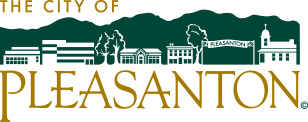Stormwater Pollution Prevention for Residents
“Storm drains,” those grates in the street that most people call the “gutter,” flow directly to our creeks, wetlands and the Bay. They do not connect to the “sewer” or water treatment plant, like many people believe. You can prevent stormwater pollution from entering these storm drains by using the following Best Management Practices in and around your house!
Hazardous Waste Disposal
Safely dispose of your household hazardous waste and keep your home and our waterways toxic free! Common household products like the following cannot be put in the trash or down the drain.
- Electronics
- Batteries
- Fluorescent bulbs
- Paint, paint cans, spray paint
- Oils and auto fluids
- Propane
- Chemical cleaners and pesticides
- Sharps containers
Items like these are considered hazardous waste and should be disposed of at your local hazardous waste disposal facility. Visit the Alameda County Household Hazardous Waste website for drop off locations, hours of operation, and more information!
Pools, Spas and Fountains
Water from pools, spas and fountains contain chemicals harmful to fish and aquatic plants living and growing in our watersheds, creeks and Bay. Help contribute to preserving a healthy watershed by using these recommended practices to maintain your pools, spas and fountains- Don’t drain pool, spa, and fountain water to the storm drain. Instead drain that water to a sanitary sewer cleanout. Need help locating your sanitary sewer cleanout? Give us a call!
- Never clean filters in the street, gutter, or storm drain. Instead clean your filters over your existing landscape.
Car Care
- Don’t let wash water enter the drain! Car soaps, even the biodegradable ones, are harmful to the aquatic life in our creeks and bays.
- Wash your car at a car wash that recycles their wash water!
- Prevent fluid leaks like motor oil, brake fluid, etc. If a spill does occur, clean them with rags or absorbents and dispose of them at your local household hazardous waste facility.
- Recycle used motor oil and filters. Don’t dump oil down the storm drains. Most automotive parts stores like AutoZone or O’Reilly’s will take your used vehicle fluids for free!
- Use the proper BMP’s when running a fundraising car wash!
Pest Management
- Safe Use & Disposal of Pesticides (English, Spanish)
- Problem Pesticides (English, Spanish)
- Pocket Guide for choosing less toxic products.
- Finding a Pest Control Company
Insect-specific Fact Sheets
Spray bottle label featuring non-toxic pest control recipes you can make at home! Print label and stick on any clean plastic spray bottle.Detain The Rain
Rainwater capture systems installed on your property can help reduce flooding and protect the water quality of your local creeks and San Francisco Bay. Landscape designs featuring rainwater capture systems retain water during a storm, then slowly release the water over a period of time. These systems conserve water and reduce flooding, stormwater pollution and erosion, while protecting our local creeks and the Bay.- Trees filter pollutants and reduce runoff by absorbing and storing rainfall – up to 1,000 gallons annually, depending on the size and type of tree.
- Rain gardens are landscaped areas that reduce runoff by absorbing and filtering rainwater.
- Disconnected downspouts direct roof runoff away from the foundations toward a landscaped area where plants and soils can absorb flows and filter pollutants.
- Pervious surfaces, such as gravel, turf block, interlocking pavers, pervious asphalt and pervious concrete, can replace traditional, impervious asphalt and concrete. These allow water to infiltrate to an appropriate, underlying drainage layer, reducing local flooding due to rainwater runoff.
- Rain barrels or cisterns capture roof runoff, releasing it safely and slowly into the landscape to prevent high flows and erosion.
Other Resources
- Tap Into the Rain Webinar Resources Packet
- Detain the Rain
- Rain Barrels and Cisterns
- Rain Gardens
- Landscaping for Stormwater Management
- Pervious Paving
- Maintaining Pervious Pavement
Other Tips
- Don’t hose down driveways or sidewalks. Dry sweeping paved areas, along with careful trash disposal, are simple, effective pollution reducers.
- Dispose of wash water in the sanitary sewer drain.
- Participate in local cleanups.
- Always use a trash can, no matter where you are.
- Reduce, Reuse, and Recycle.
- Pick up after your dog. Pet feces contain high concentrations of pathogens.
- Have your septic system inspected and pumped, at a minimum, every 3-5 years so that it operates properly.
Fats, Oils, and Grease (FOG)
Cooking oil and grease poured down drains can build up in pipes causing backups at home, into streets and the storm drain system. Proper disposal of your cooking oil and other greases and fats will help prevent sewage backup in your home. Overflows can pose health and environmental hazards, polluting local creeks and San Francisco Bay.Storm Drain vs Sanitary Sewer
Sanitary sewer drains are the same drains that collect water from toilets, sinks, showers, etc. This water is directed to a wastewater treatment plant where it is treated and filtered. Most residential properties will have a sanitary sewer cleanout where all “contaminated” water should be directed to. This includes wash water, water from pools, spas, and fountains, and any other water that in not exclusively rain.
Storm drains are located along the street and in parking lots.
These storm drains collect water runoff from driveways, parking lots, roads, gutters, buildings, and more, and transport them to our local creeks and eventually out to the bay untreated. You should never dispose of anything down these storm drains. Remember, only rain down the storm drain!
If you are unsure whether a drain leads to the sanitary sewer system or the storm drain system, or if you are having trouble locating your sanitary sewer cleanout, reach out to the City of Pleasanton Environmental Services Staff.
